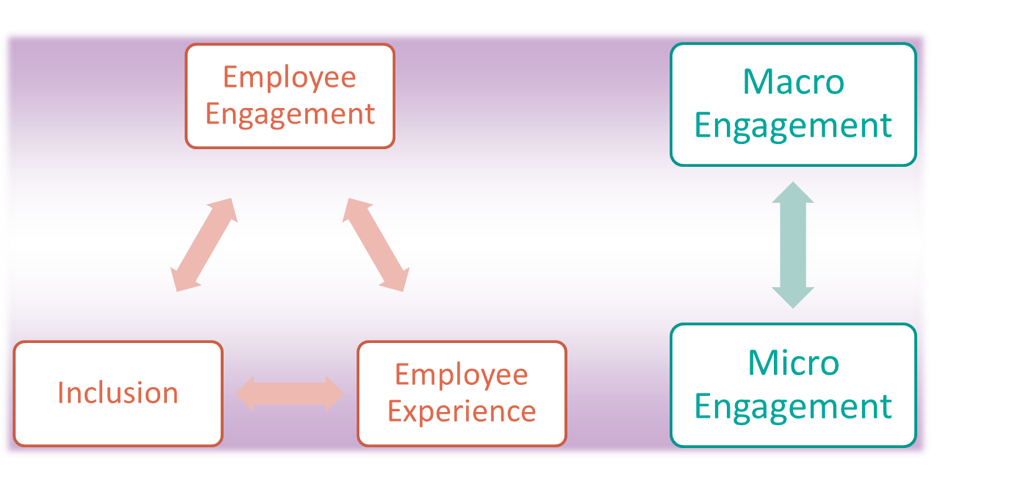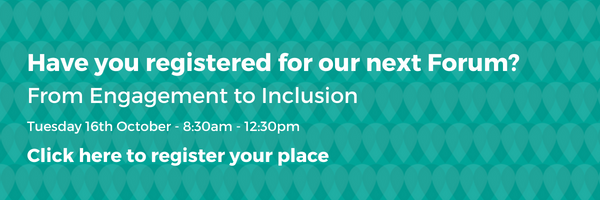The word “Inclusion” in HR circles often generates a conversation that quickly moves towards ensuring a balance of diversity within the workplace that represents the external world and about ensuring barriers are broken down. This often concentrates on “easily-reportable” areas like gender, race and religion.
However, in my experience, real inclusion comes from the feedback around the experiences of the individual, and their feeling of acceptance within their direct team. Often is the case that, when asked, there are usually “hidden excluders” that we can easily miss when we look solely at gender, race and religion.
In my dealings with senior HR teams I regularly find a small D&I team or an individual who has been given the “Diversity and Inclusion Manager” position and has been tasked with making an inclusive culture in a business of thousands of employees. This is an impossible task unless we begin approaching inclusion in a way where positive change can infect an organisation’s culture in a broad way and not just from the top through central initiatives.
The role of the leader in Inclusion
There are many definitions of Inclusion in the workplace. The Cambridge Dictionary has this definition under it’s business dictionary: “the act of allowing many different types of people to do something and treating them fairly and equally”. And this got me thinking about the leadership development training I have delivered over the years, such as:
- Emotional Intelligence
- Situational Leadership
- High Performing Teams – Belbin etc
- Personality profiling tools
The list could go on. But the point is that we have been educating our leaders for years in the basics of Inclusion. In Emotional Intelligence training we discuss empathy as a way of understanding the specific needs of the other party and using self-regulation as a way of changing our own behaviour and adapting to their needs. In Situational Leadership by Ken Blanchard the concept rotates around adapting your style of leadership to the amount of support you need to offer the individual based on their capability and the task they are doing.
The Belbin team model is underpinned by the theory that you need a diverse set of work styles and preferences to come together and work as a unit. This only happens when the individuals in the team respect and embrace the positive differences that they have. Finally, personality profiling tools are so popular in business because we understand that if we know ourselves better and how others differ then we will have better and more productive work relationships.
I could go on but my realisation is that we have been doing pockets of inclusion training with our most critical population for culture change success – our people leaders.
Inclusion Development?
What if we could refocus this learning (in whatever form) as “Inclusion Development” as a more targeted offering? Then we could make the importance of Inclusion a more overt topic within our organisations. If we can enable our leaders to understand the narrative of Inclusion through this development then we could create inclusion ambassadors throughout the organisation and therefore can affect true culture change.
Focusing on Inclusion, after all, is a way of improving the employee experience for each individual which, in turn, creates higher levels of engagement. Consider this simple model:

The concept of Macro and Micro Engagement is useful when trying to develop any form of culture change within the organisation. In essence, Macro Engagement focuses on the organisation-wide activities that are undertaken to enhance the engagement of employees. This is often structural – talent processes, learning infrastructure, feedback processes, creating insight, wellbeing activities. Micro Engagement is the hour by hour, day by day, interactions within the team and in the manager-employee relationship.
In our view, to increase the chance of creating positive cultural change in any organisation, there should be activities that align to both Macro and Micro Engagement. Focusing on one area and not the other decreases the chance of creating “sticky change” – i.e. change that sticks and not the type that reverts back as soon as the project is completed.
Taking this back to the topic of Inclusion, the Diversity and Inclusion Manager deals with influencing the Macro Engagement as a focus. Working with the Learning Teams we can create greater Inclusion by upskilling the people leaders with “Inclusion Development” and therefore improve the interactions at the Micro Engagement level, so individuals within front line teams feel more included.
Our people leaders are the custodians of successful change. By making them “Inclusion ambassadors” we can increase the chance of organisations successfully fostering an inclusive culture. This is what I think of as Everyday Inclusion – Leaders creating inclusive environments for their people with every interaction with their teams – while senior HR leaders create an environment in which this can happen.
If you want to find out how we can help you create inclusive environments with our Macro and Micro Engagement model, then please talk to us at Tap’d.


